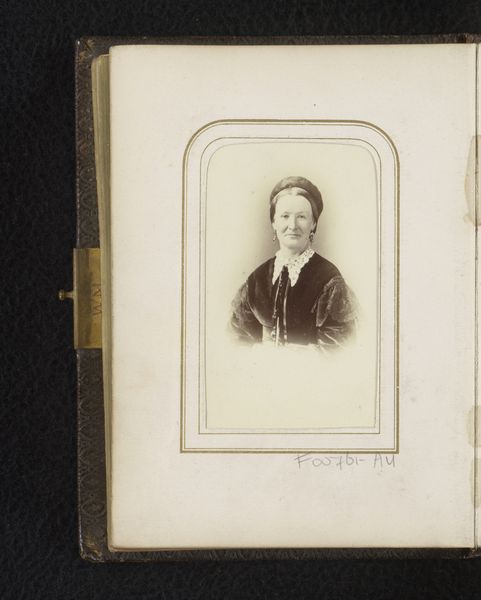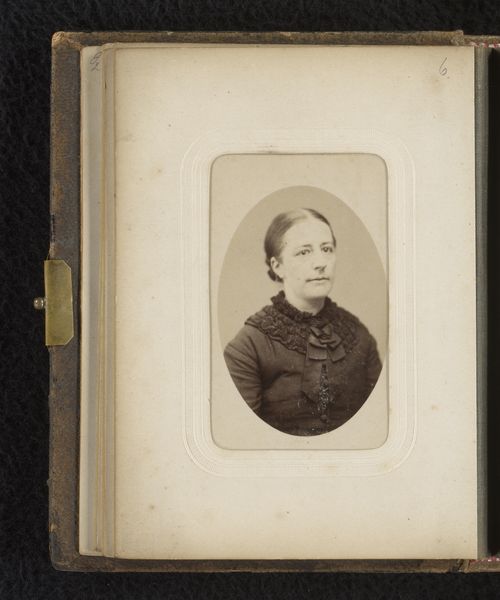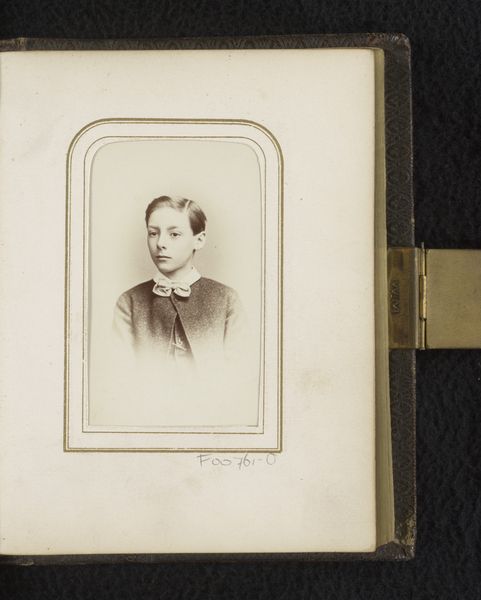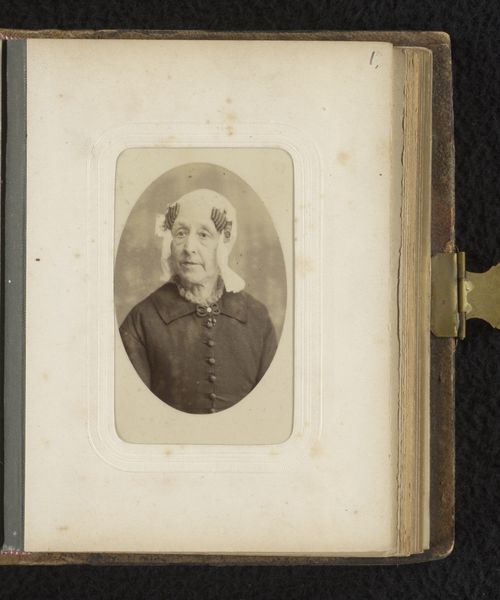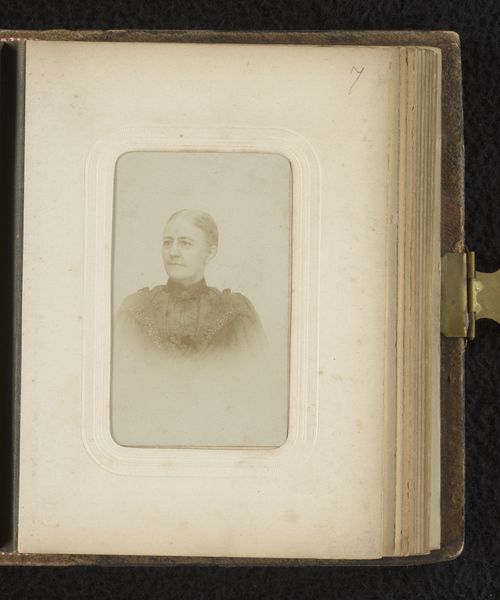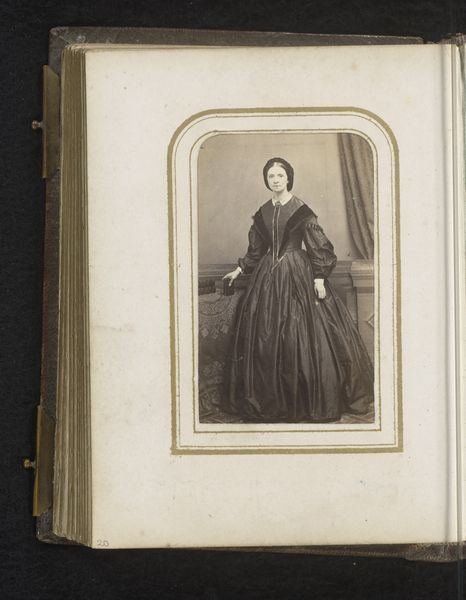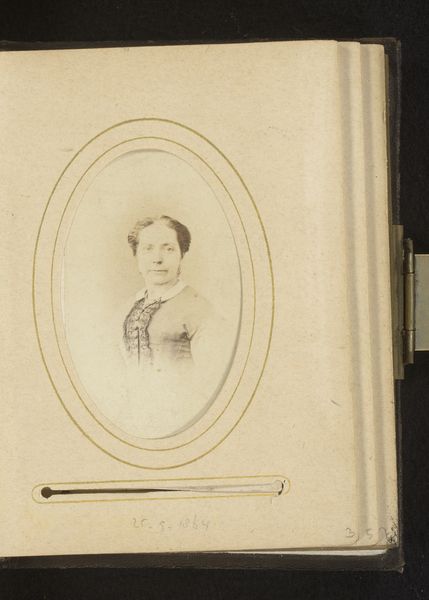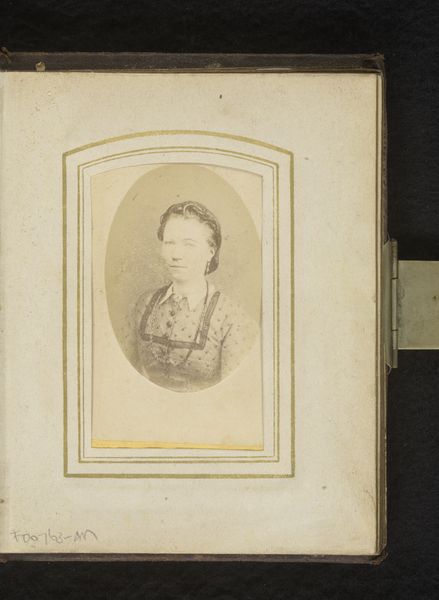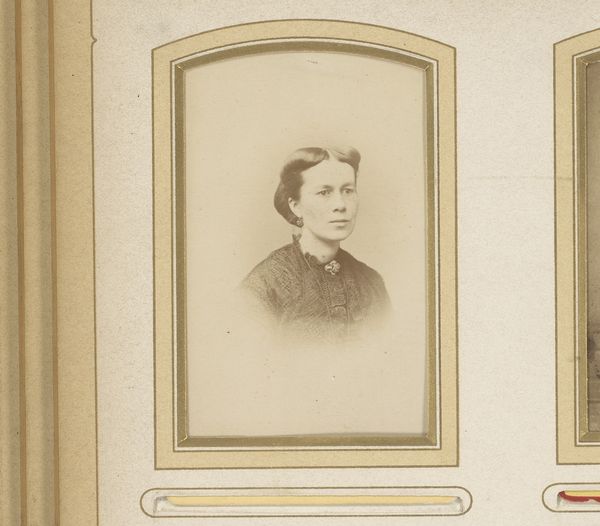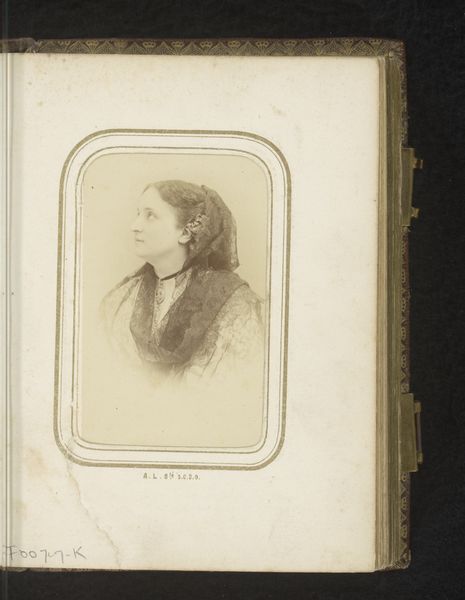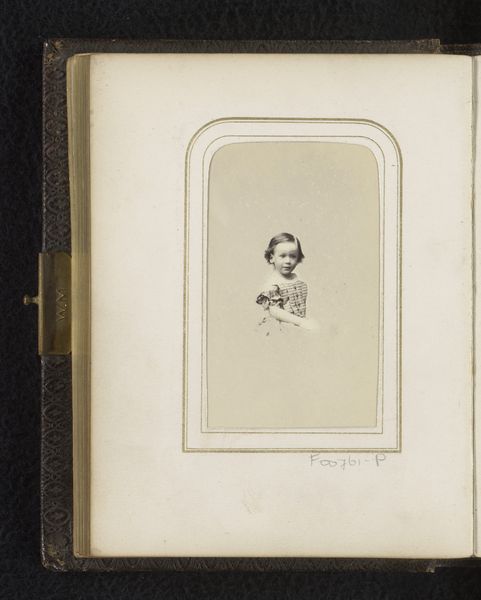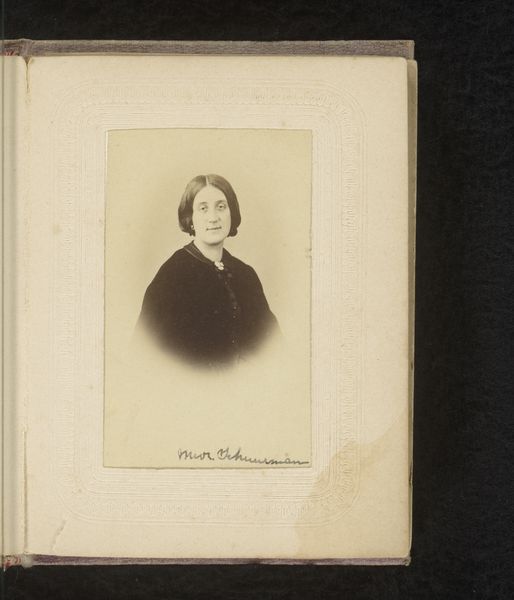
photography, albumen-print
#
portrait
#
photography
#
coloured pencil
#
albumen-print
Dimensions: height 84 mm, width 50 mm
Copyright: Rijks Museum: Open Domain
Curator: Here we have an albumen print from the late 19th century, specifically created sometime between 1860 and 1880. The work is attributed to C. & D. Hay, and is known as "Portret van een jonge vrouw"—Portrait of a Young Woman. Editor: What a beautiful and slightly melancholic image. There's something hauntingly present in her gaze, almost as if she anticipates her future fading into the past even as the photo is taken. The soft sepia tones really enhance that feeling, like a memory struggling to hold its colour. Curator: The albumen process, so popular in that era, often lends that warmth, doesn’t it? It uses egg whites to bind the photographic chemicals to the paper, giving a subtle gloss and those rich, delicate tones that are almost impossible to replicate perfectly today. And it’s true, these portraits were incredibly personal objects. The fact that we see her presented in this formal, posed way speaks to the evolving rituals of photographic portraiture. Editor: I’m drawn to how contained she appears. There’s a fragility suggested by the way she’s framed within the elaborate card—protected, almost. Does her modest dress speak to any particular social conventions of the time, or a certain role in her community perhaps? Curator: Her clothing certainly adheres to the prevailing modest fashions of the time, but it’s difficult to assign a particular role or specific meaning to it without more contextual clues. What strikes me is the almost studied stillness – how much emotional narrative a single captured instant can hold. Think about the intent behind commissioning the image and what those small sartorial choices reveal about this young woman's social sphere. Editor: It’s that tension, isn't it? This attempt to grasp at permanence through this delicate, fading medium. And the image now has more emotional resonance given our own distance from that era. You can't help but feel for the subject's desire to imprint some part of herself, if only a ghost, into time. Curator: Absolutely. I see the photograph now not as a captured fragment of life, but a relic. And with each viewing we breathe a new existence back into that frozen moment in time. Editor: Agreed. So in a sense, we, the viewers, keep the cycle of her narrative, of human intention, ever returning.
Comments
No comments
Be the first to comment and join the conversation on the ultimate creative platform.
